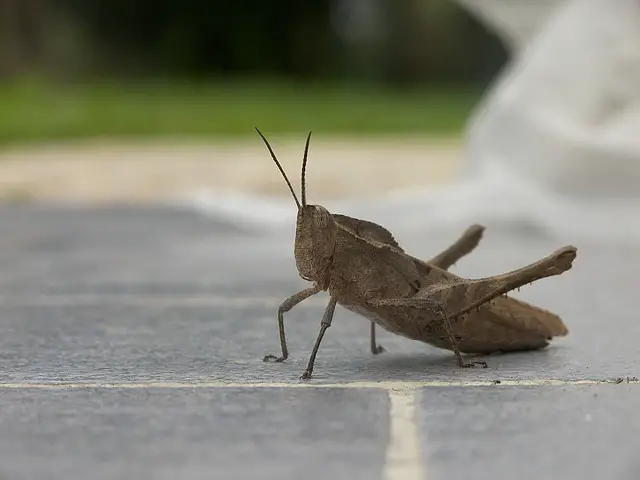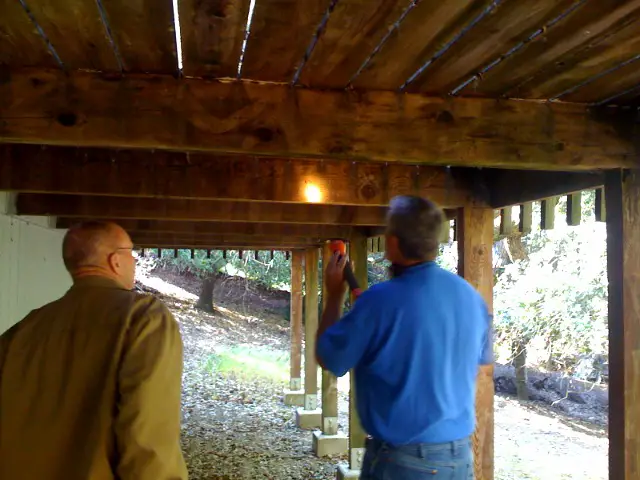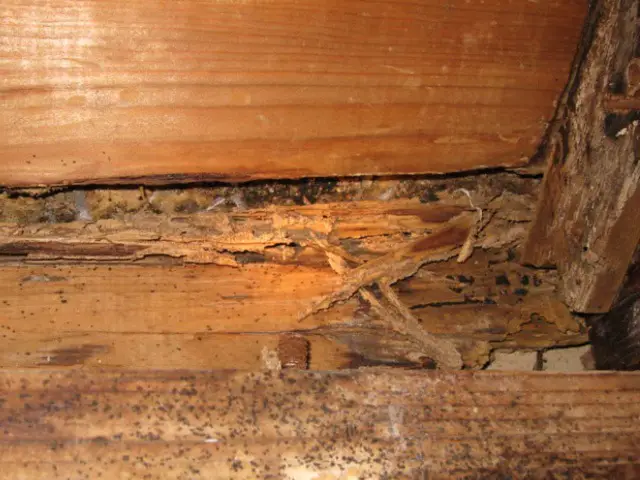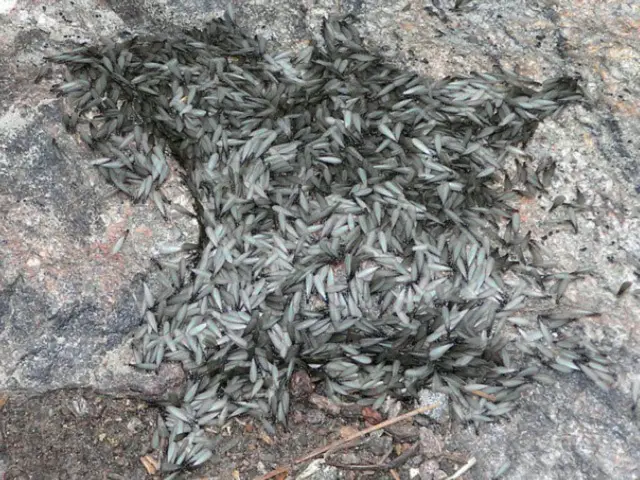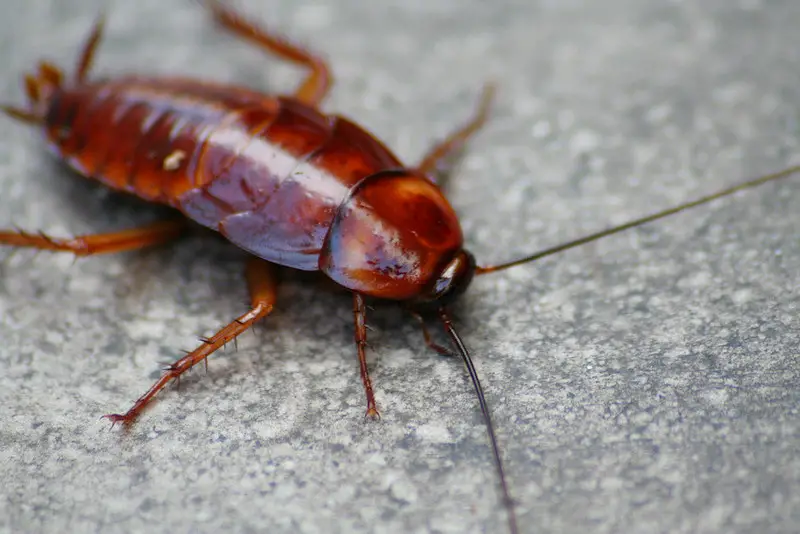Like many other pests, crickets make their way into your home, searching for food, water, or shelter. Although crickets prefer to live outdoors, many of these annoying pests find their way indoors from time to time. If your house has the right conditions, it will attract crickets.
There are about one hundred species of crickets in the U.S. Crickets are nocturnal pests. Like all insects, the bodies of crickets are protected by a hard exoskeleton. Only the male crickets can make the loud chirping sound that drives so many people crazy.
Related post:
How to find crickets indoors?
Crickets are one of those pests that aren’t the most repulsive like roaches, but they are still a nuisance. The constant chirping is enough of a reason to want to get rid of crickets. But, before you can get rid of a chirping cricket you have to find it.
How to find a cricket in your house?
Crickets love to hide inside houses. They love to hide in closets, under furniture, and behind appliances. But that chirping noise crickets make can drive you crazy. Because the chirping noise can bounce off walls, finding a cricket hiding in your house can be difficult.
Crickets like to hide in moist areas. Homeowners can find crickets in garages, basements, crawl spaces, and bathrooms. Don’t be surprised if you find crickets in pet food. Crickets might also get into your fruits and vegetables.
How to find a cricket indoors?
Crickets go under electrical wires, the floor tiles, the carpeting, and the baseboards. Many of them like to hide in boxes and bags. They may be in a basement or crawl space. Crickets are also sometimes found in human clothing.
What attracts crickets in the house?
Crickets often choose homes as hiding places. They escape from predators or extreme weather. For example, crickets may be attracted to your home in response to lots of rain or drought. This insect is one of the most annoying pests because of its loud and continuous chirping.
Here is a list of things that attract crickets in the house:
- Outdoor lights
- Moisture and damp areas in and around your house
- Poorly sealed doors, windows and vents
- Gaps and crevices around plumbing and electrical wires
Why do I see crickets in my house?
Crickets are attracted to warm and damp areas, and they thrive when the temperature is between 80 and 90 Fahrenheit. As a result, these pests like to hide inside houses close to heaters, fireplaces, bedding, piles of wood, and the kitchen. You can also locate crickets in other parts of the house, such as the garage or basement.
The cricket infestation occurs when pests enter your home for food, water or shelter. A cricket infestation is more annoying than dangerous to your health. However, the constant chirp during the night can drive you mad.
After a house cricket finds its way inside, it will feed on fabric, paper, pet food, and almost anything it can find. But, of course, crickets will also eat fruits and vegetables.
Crickets that live outside your home feed on dead insects and plant matter. Unfortunately, crickets are annoying pests as they will eat anything they find. They are also known as scavengers.
How long will a cricket live in my house?
It’s critical to understand the cricket life cycle to know how long a cricket will live in your house. The life span of crickets is no longer than three months. Crickets have three distinct stages in the life span: egg, nymph, and adult cricket. These pests can live several weeks as adult crickets.
- Eggs – The cricket life cycle begins as an egg. Crickets lay eggs in the fall—the eggs hatch in the following spring. Female crickets lay up to ten eggs per day, about 100 during their life.
- Nymphs – Juvenile or nymphs look like smaller versions of crickets. However, there are some differences between adults and nymphs. The wings of nymphs are not fully developed. Nymphs shed their outer skin multiple times before maturity. Adult crickets often feed on nymphs.
- Adults – Mature or adult crickets have fully developed wings, and it’s the wings that make the trademark chirping sounds of these pests. Adult crickets are black or dark brown, with antennae several times longer than their legs.
- Lifespan – Once crickets reach adulthood, they have two missions. One is to find a mate, and the second is to feed. A male cricket’s goal is to attract females. After mating, female crickets spend their time finding suitable locations to lay their eggs. Crickets live for up to ten weeks as adults. They either die of old age or due to cold temperatures.
However, a mature cricket can live without water or food for as long as two weeks. So if you can keep food away from crickets long enough, you might be able to get rid of them, but they may do some damage in your house while you wait.
How to find a cricket outdoors?
There are outdoor conditions in which you will find crickets. Crickets are found on the soil. They hide under live and dead plants. Their natural habitat is in grasslands and open areas, but they are also found in parks and gardens. You can also find crickets in flowerbeds, gardens, trees, shrubs, and around bird feeders.
Often, you can find crickets in city parks and gardens. They may be crawling around on the grass or nearby shrubbery or tree trunks. Some of them will have found a crevice in an ornamental plant, and they can be found trapped inside. Crickets need plant material to survive outdoors. They are most diverse in warm and humid locations.
Can crickets hurt you?
Technically, crickets can bite. But it’s unlikely that crickets would hurt you since it’s rare for a cricket’s mandibles (mouthparts) to puncture human skin. So, even though crickets won’t bite you, crickets can hurt you in other ways.
Are crickets harmful?
Crickets carry diseases and parasites. For example, these pests carry salmonella and escherichia coli. Cricket feces can also harm you. It can cause painful sores and rashes. Therefore, it’s critical not to make contact with cricket droppings. On occasions, crickets can cause flu-like symptoms in people.
Although crickets can be harmful, they’re more annoying than anything. These nocturnal pests can drive you crazy with their endless chirp to each other.
How to get rid of crickets in your house?
You don’t have to stay awake all night inside your house, having to listen to that annoying cricket chirping. Here is what you can do to get rid of crickets in your house:
Get rid of crickets with traps
There are several good reasons to trap crickets. First, they are a nuisance inside your home. Second, crickets can also damage your personal items and spread disease in your home. Traps offer a quick and efficient way to control crickets inside the house. Because it’s tough to attract crickets to a trap, catching them is by chance. The secret to catching crickets with traps is placement.
Get rid of cricket with Diatomaceous Earth (DE)
Diatomaceous Earth is about 90% silica, a powder you can use to get rid of crickets in your house. DE kills crickets by drying them out. Diatomaceous Earth is considered non-toxic to pets and humans. This pest control powder can scratch a cricket’s exoskeleton and eventually kill it. However, if you use it correctly, DE can help to get rid of crickets already inside your home.
Use your vacuum to get rid of crickets in your house
Sometimes getting rid of crickets is as easy as catching them with your vacuum. But, of course, there is one caveat. You can only suck them up if you see the crickets.
Seal gaps and openings to get rid of crickets
Sometimes the best way to get rid of crickets is prevention. Sealings gaps will keep crickets from entering your house. You should start by making sure that windows close tightly. Also, ensure that weatherstripping is secure and add screens to get rid of crickets. Next, you can seal utility lines with caulking. Finally, install a door sweep along the bottom of doors. It’s important to check regularly to ensure the barriers to keep crickets out have not been broken down over time.
If you’ve tried everything you can to get rid of crickets, it’s time to call in a pest control professional. Unfortunately, sometimes it’s only possible to get rid of the crickets, and their chirping, with the help of a professional exterminator.
Mole Cricket Damage in Lawns
Mole cricket damage can appear as spongy brown areas within normal green grass. This is because damaged grass has been eaten just below the surface, separating the plant from its roots.
Mole Cricket Adults and Nymphs
Adult mole crickets are plump and winged. They are up to 1.25 inches long. They are rarely seen. Like moles, Mole crickets are almost always underground.
Mole crickets fly and mate twice a year. The cricket mating season is in the spring and fall. During the cricket mating season, homeowners will find their exit holes of an inch or more. Mole cricket nymphs are wingless, but they look like small adults. Nymphs can become numerous. Unfortunately, even nymphs can cause great damage to your grass during the warm summer months.
Concentrate on getting rid of mole cricket nymphs! Adults do little damage compared to the havoc wreaked by mole cricket nymphs.
As these nymphs (young versions of the adult) move from their hatch to the surface, they are hungry for their first meal.
Adult mole crickets do little damage and are very difficult to kill. Therefore, all of your efforts should be on getting rid of mole cricket nymphs. Not only are they the real culprits, but they are so much easier to kill than the adults.
In late winter or early spring, many people make the mistake of misidentifying their lawn problem. The sight of adult mole crickets and spots of lawn that are dead or dying trick people into believing that mole crickets are feeding on their lawn.
The real culprit (at this earliest time of year) is usually a fungus. When questioned about their “mole cricket infestation” during the first three months of the year, most clients say they have used a weed & feed or other fertilizer in the previous 2 to 4 weeks.
Nitrogen feeds fungus. Any lawn or turf fungi that have been lying dormant all winter will spring to life when any nitrogen fertilizer is applied to the lawn.
Apply a granular, systemic lawn fungicide at the first sign of lawn damage (as the grass awakes from winter dormancy). To kill or prevent mole crickets in lawns, find out when to apply cricket insecticide. On the Gulf Coast, many people purchase (and apply) insecticides from late February and later.
Most of these homeowners have to reapply for insecticide in May or June — because they insisted on treating too early. But, unfortunately, early treatment does nothing to the super-hungry mole cricket nymphs that cause the majority of the lawn damage.
If you intend on fertilizing your lawn in the spring of the year, it would be wise to apply a systemic fungicide just before or with the fertilizer. When used for prevention, fungicides are applied at half the rate of curative measures. It costs twice as much to kill an active fungus to prevent the same fungus problem.
When to apply cricket treatments?
Depending on where you live, cricket treatment should be timed to kill immatures (nymphs) that damage turf grasses the most. For example, in the Gulf Coast area (for example,) treat with a safe insecticide during the last week of April. And in the Carolina coastal area, Memorial Day is the best time for insecticide application.
Many people will “jump the gun” and treat crickets a month or two too soon, trying to kill the full-blown adult crickets they see in swimming pools and on their sidewalks, etc. This is a mistake. It’s also a waste of time and money. The mature pests are not feeding so much as they are mating. Their young are the pests that kill turf grasses — and the nymphs are much easier to kill.
